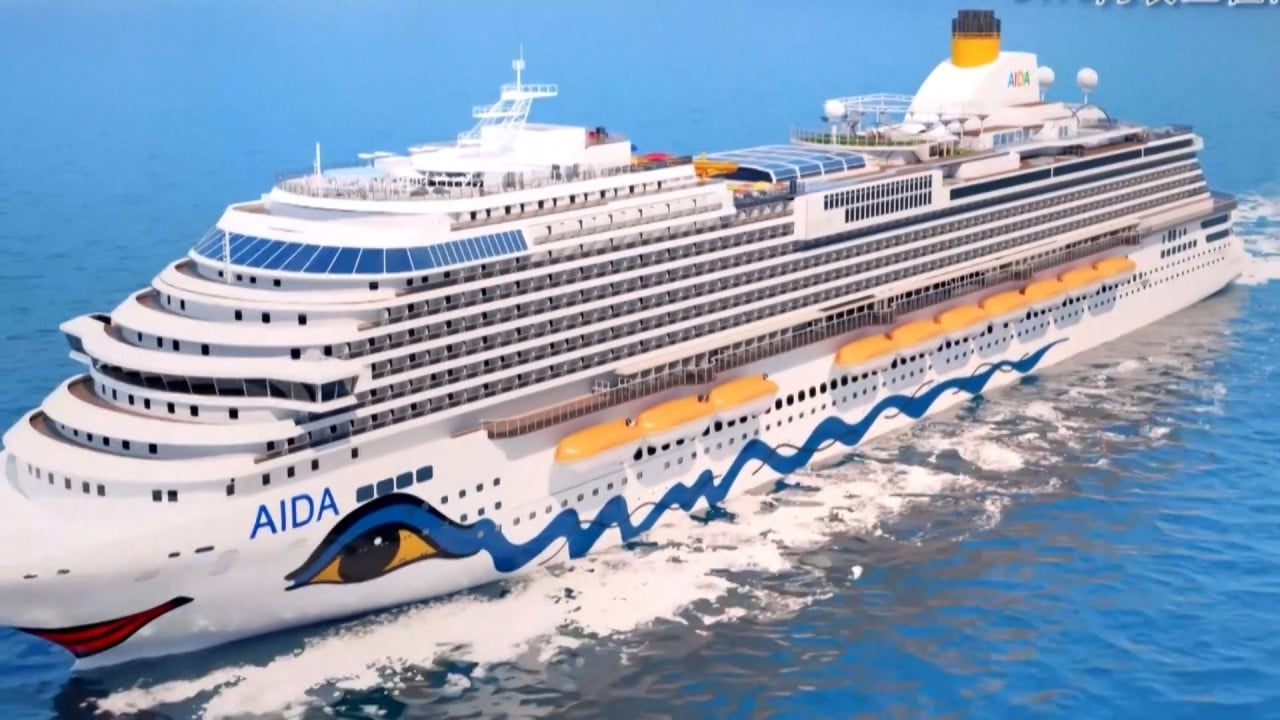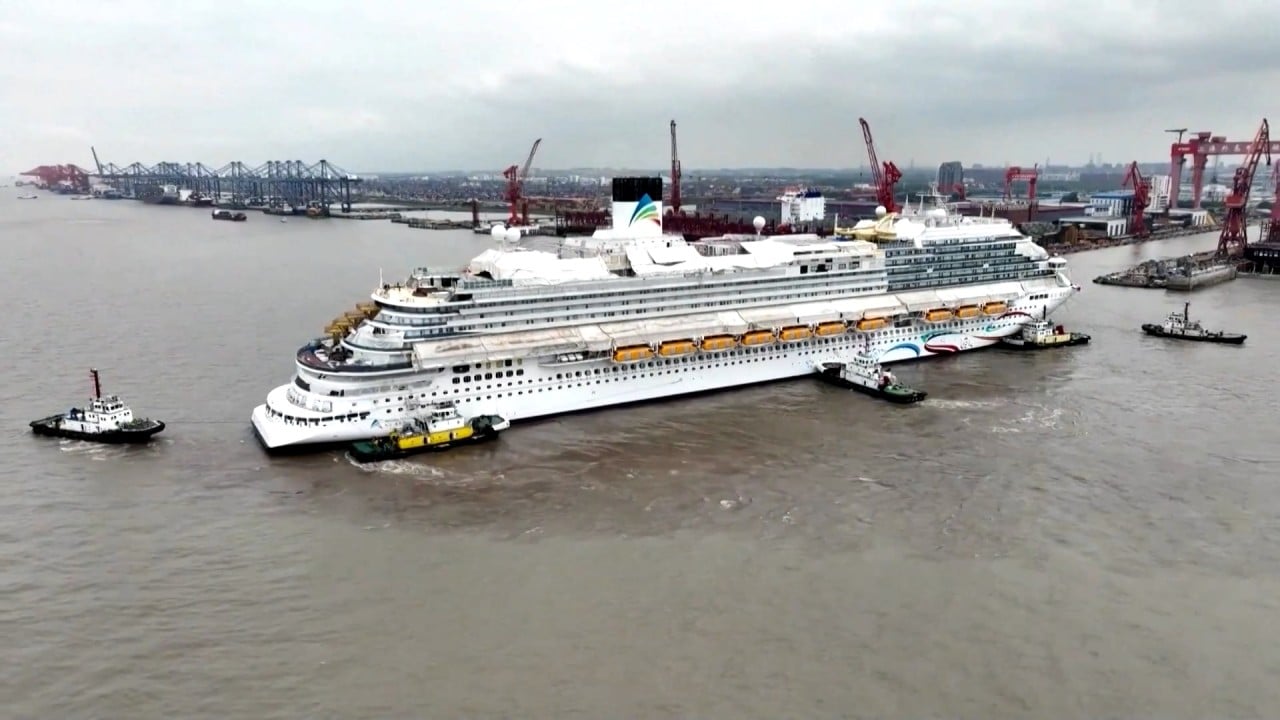
China becoming world’s go-to for shipbuilding after ‘boom of overseas orders’, but global de-risking threatens to rock the boat
- China State Shipbuilding Corporation became the biggest shipbuilder in the world after a merger in 2019
- Germany, though, has expressed wariness toward China’s growing market share, while the UK has plans to use £4 billion (US$5 billion) to shore up its shipbuilding industry
As China steps up efforts to take more market share in the global shipbuilding industry, some Western countries are poised to pull back to avoid overreliance on Chinese manufacturing at a time of politically charged de-risking.
The China State Shipbuilding Corporation became the biggest shipbuilder in the world after a merger in 2019, and the government-run Xinhua News Agency said last week that the builder had seen a “boom of overseas orders” this year, with production plans scheduled into 2027.
In 2022, China accounted for 48 per cent of global shipyard output, with South Korea at 25 per cent and Japan at 15 per cent, according to data from the maritime industry professional services firm Lloyd’s Register.
China becoming a major world shipbuilding centre may cause other countries to consider it to fill immediate needs for orders where other yards are already at full capacity
In 2022, China’s shipbuilding output, newly received orders and orders on hand accounted for 47.3 per cent, 55.2 per cent and 49 per cent, respectively, of the global market share.
The figures place China ahead of rivals South Korea and Japan, according to data from the China Association of the National Shipbuilding Industry.
“China becoming a major world shipbuilding centre may cause other countries to consider it to fill immediate needs for orders where other yards are already at full capacity,” said Tom Ramage, economic policy analyst with the Washington-based Korea Economic Institute of America.
Globally, the number of shipyards dropped from around 700 in 2007 to around 300 by 2022, according to BRS Shipbrokers.
All you need to know: timeline of China’s first home-built large cruise liner
BRS found that 75 per cent of world shipbuilding capacity belongs to nine shipbuilding groups, with 68 per cent of China’s capacity falling under just three.
Germany, though, has expressed wariness toward China’s growing market share.
In a statement in May last year, the German Shipbuilding and Ocean Industries Association urged its government – along with its European neighbours – to make a “fundamental change in shipping policies” so the industry could better compete with shipbuilders in China and South Korea.
The statement said the governments of both Asian countries offer substantial support for the industry.
Already today Europe’s shipping sector – and the German one disproportionately so – is highly dependent on supplies from China
“Without a fundamental change in shipbuilding policies, Europe will lose the capability to build seagoing merchant ships on any significant scale over the coming 10 years,” the association said.
“Already today Europe’s shipping sector – and the German one disproportionately so – is highly dependent on supplies from China.”
The UK government has said it plans to use £4 billion (US$5 billion) to shore up its own shipbuilding industry and prevent further job losses.
The US-China trade war had already sparked a wider effort among Western-allied countries to steer away from China as a manufacturing base.
Why is China’s first home-grown large cruise liner a breakthrough?
“Manufacturing prowess cannot be turned on like a light switch,” said Stephen Olson, a senior research fellow at the Hinrich Foundation and a former trade negotiator with the Office of the US Trade Representative.
“Once production moves out, it is not just the factories, machinery, and equipment that is lost. Human capital, in the form of a skilled and experienced workforce, is also lost.
“In many instances, it is quicker and easier to build a new factory than it is to build a skilled workforce.”
Where possible, foreign contractors will consider steering away from China, Ramage added.
“Uncertainty caused by sudden sanctions exposure and navigating Byzantine government regulations will cause many countries looking to fill long-term contract orders with Chinese shipbuilders to consider de-risking before becoming too dependent on China,” he said.
China, South Korea and Japan are the dominant players in ship construction, but countries in Europe, North America and elsewhere will likely have their own strategies over time to sustain their domestic industries, said Park Sung-gu, the Seoul-based president for North East Asia with Lloyd’s Register.
And Western shippers looking for new vessels are likely to avoid China as part of the wider global trend of industrial decoupling, said Guilherme Campos, an international business advisory manager in Dezan Shira & Associates’ Shenzhen office.
For Korean shipbuilding, the key challenge is to differentiate its offering
“Given the recent trends on doing business with Chinese companies and the fact that lots of Western companies are black listing companies simply because they are Chinese, then it’s predictable that foreign companies will try somewhere else,” Campos said.
South Korea is well placed to support world demand for environmentally friendly ships as operators chase decarbonisation goals, Park said.
Its shipbuilders lost money in both 2021 and 2022, while Hanwha Group merged with the loss-making Daewoo Shipbuilding & Marine Engineering in May.
“For Korean shipbuilding, the key challenge is to differentiate its offering,” Park said, who added shipbuilding costs are less in China primarily due to lower labour costs.
South Korea is seen as better equipped to build technologically advanced ships for a range of uses, such as passenger cruise liners and vessels for liquid natural gas transport.
But top South Korean shipbuilders, such as Samsung Heavy Industries, are still reporting losses despite a pickup in orders, according to an annual review for 2023 by BRS.
Shipbuilding is not an industry that makes money
China CSSC Holdings, the Shanghai-listed subsidiary of the China State Shipbuilding Corporation, reported an operating income of 59.558 billion yuan (US$8.2 billion) in 2022, representing a year-on-year decrease of 0.31 per cent.
Its net profit attributable to the parent company stood at 172 million yuan, a year-on-year decrease of 19.62 per cent, while its loss increased by 214.59 per cent, year on year.
“Shipbuilding is not an industry that makes money,” BRS said in its report.
“The industry has been trying to develop various strategies to counter low prices, and one of the main findings has been to reduce global shipbuilding capacity via yard closures and consolidations.”




